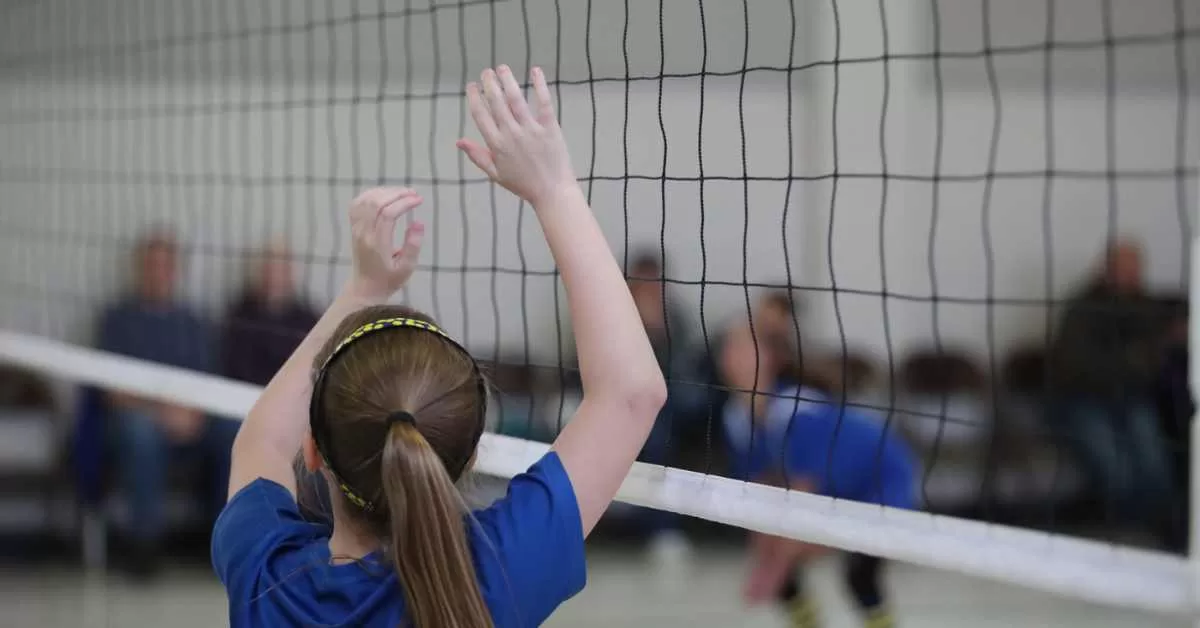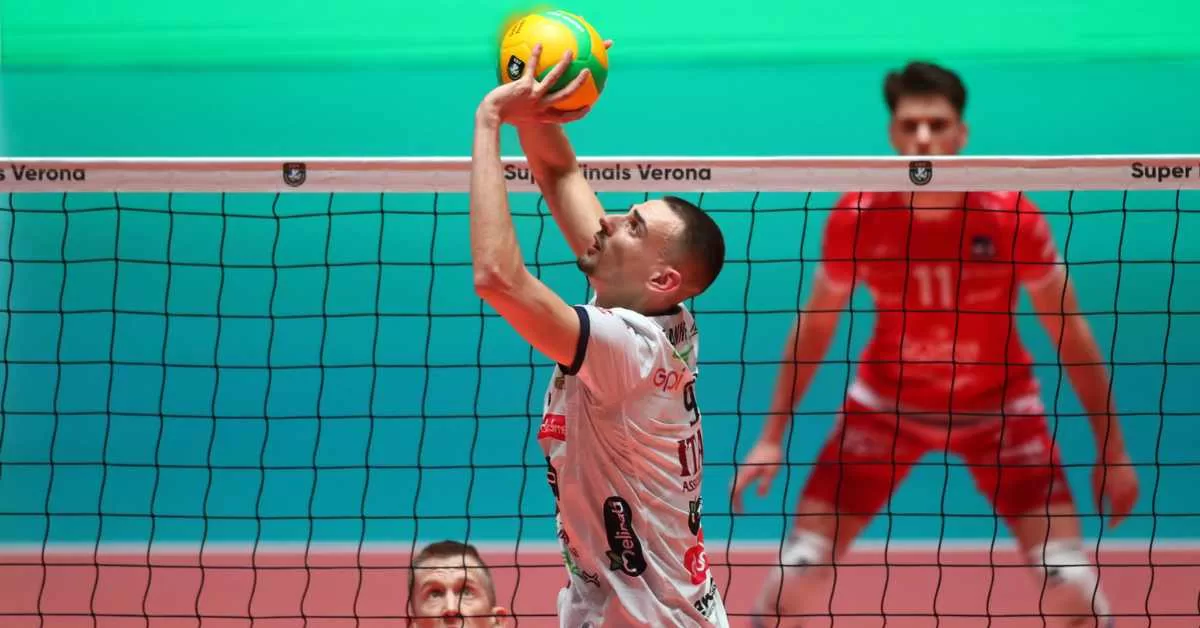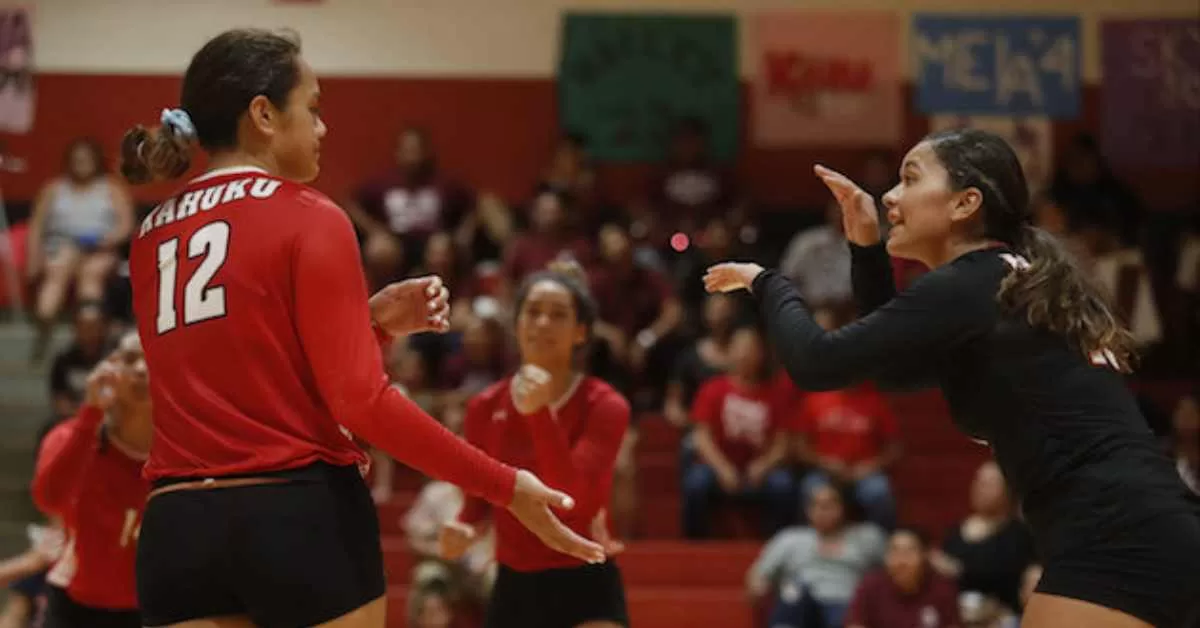Setters are often considered the offensive playmakers in volleyball, and their height is not typically their standout feature on the court. However, it’s crucial to debunk some common misconceptions surrounding the ideal height for setters.
How Tall Are Setters In Volleyball? Setters in volleyball vary in height, but on average, male setters are around 6’0″ to 6’3″ (183-191 cm), and female setters are typically 5’8″ to 6’0″ (173-183 cm). Height is important but not the sole determinant of setter effectiveness.
To unravel this, we will explore height averages across various levels of the game and provide insights into strategies and skills that can help a setter excel, even if they don’t boast the tallest stature.
What Is the Typical Height of a Setter?

The height of setters in volleyball depends on the level of play. What’s fascinating is how their heights compare to other players. And, you might be surprised by some of these numbers!
1. Typical Height of College Volleyball Setters
In men’s college volleyball, setter heights vary by division. For D1/D2, they’re typically 6’1″ to 6’5″ tall. In D2/D3, it’s around 6′ to 6’4″, and for D3/NAIA, about 6′ to 6’3″. NAIA/CCCAA setters range from 6′ to 6’5″.
For women’s college volleyball, D1 setters are roughly 5’10”, D2 around 5’8″, D3 at 5’7″, and NAIA also at 5’7″.
So, on average, D1 women’s setters are 5’10” tall, while D1 men’s setters are between 6’1″ and 6’5″ according to the NCSA website.
2. Typical Setter Heights at the Olympic Level
Setters in top-level volleyball are gradually getting taller over the years. In the Olympics, men’s setters averaged 6’3.5″ in 2012 but dropped to 6’1.2″ in 2020.
Women’s setters, on the other hand, were 5’8″ in 2012 and rose to nearly 5’11” in the 2021 Nations League. So, women’s setters are getting taller, while men’s setters are getting slightly shorter.
The data is limited, but it suggests a trend of increasing setter height in volleyball.
3. Comparing Setter Height to Other Volleyball Positions
Most folks might assume setters are quite short on the volleyball court, but what often goes unnoticed is that setters are only a bit shorter than outside hitters.
In the 2012 Olympics, height data by position was published, revealing that setters were just 2cm (less than an inch) shorter on average than outside hitters but still 10cm taller than liberos.
So, if you thought setters were similar in height to liberos, they’re actually much closer in height to the hitters!
Is Height Essential for a Volleyball Setter?
What’s the ideal height for a setter? It’s a bit of a puzzle, and the answer is both yes and no.

1. Height Matters, but Short Isn’t a Deal-Breaker for Setters
As a setter, if you’re a bit shorter than others, it’s not a big problem. You can make up for it in different ways. For example, if you can jump higher than most by 6cm, that’s an advantage. Focus on what you can control.
Be a precise and dependable setter that hitters appreciate. Work on your jump serve. Boost your court awareness and volleyball knowledge.
Improve how you talk and lead on the court. These skills can make you a valuable player, even if you’re not the tallest.
2. The Importance of Height Is Often Overlooked by a Setter
Being tall is a big advantage for setters. When you’re taller, you can block better, especially against talented spikers. If you’re shorter, it’s harder to block effectively, and your opponents can hit over your hands.
Tall setters can also save passes near the net by jump setting and win more jousts. Plus, their setter dump is trickier to defend.
When tall setters are on the front court, it makes life tough for middle blockers, so they have to focus on blocking, which helps your team’s attackers get better hits. Being tall is a big win for setters.
3. What Height Is Ideal for a Setter Position?
In the upcoming section, we’ll discuss some exceptionally short setters, but keep in mind they are rare exceptions. While you don’t have to meet specific height requirements to succeed as a setter, it does get tougher if you fall short.
For men aiming to be successful setters, being at least 6’1″ (185cm) is advisable, although it’s shorter than many elite setters. However, with exceptional skill and effort, it’s doable. If you’re under 6 feet unless you can jump really high, consider becoming a libero.
For women, aiming for 5’8″ (178cm) or taller is realistic. These are general guidelines, and scholarships in women’s college volleyball often favor around 5’10”.
Achieving Success as a Petite Setter
Succeeding as a shorter setter means putting your energy into things you can excel at. You might not excel at blocking due to your height, but you can become a wiser and more accurate playmaker. Here are some key areas to work on if you’re a shorter setter.
1. Boost Your Jumping Ability
If you’re not very tall, you can make up for it by jumping really high. While people often associate high jumps with outside hitters or opposites, setters can do it too. A higher jump helps you block better, win jousts, make more dumps, and save overpasses.
It also boosts your overall speed on the court, allowing you to reach stray passes. To achieve this, focus on strength exercises in the weight room. Getting stronger and jumping higher also improves your serving, which is our next point to discuss.
2. Flawless Skill Execution and Precision
If you’re a shorter setter, it’s essential to focus on perfecting your technique and accuracy since you can’t rely on height like taller setters. This means spending more time and effort to become really good at setting the ball accurately.
To help, you can use a volleyball setter target net, even when you’re practicing alone, to get feedback on your sets. Work on your weak points, like quick sets or tricky back sets.
If you feel your hands and wrists need more strength, try using a weighted training ball during practice. With dedication, you can become a skilled and accurate setter, no matter your height.
3. Enhance Communication Skills and Build Volleyball Knowledge

Great setters have a unique ability to understand the game and create smart strategies. While some of it comes naturally, you can develop this skill by playing a lot of volleyball.
If it doesn’t come naturally, you can watch volleyball games on YouTube in your free time. Try to put yourself in the setter’s position, think about what you would do, and predict how they respond in different situations. This helps you learn and improve your volleyball IQ.
4. Turn Your Serve into a Valuable Weapon
If you’re a shorter setter and want to be a valuable team member, focus on improving your serving skills. Even if you’re not great at blocking, being a dependable server can make a big difference.
Practice your serving a lot by getting to practice early and staying late. Try to do 50-100 extra serves every week. With practice, you can become a standout server like Yuji Nishida.
The Most Petite Professional Volleyball Setters
If you’re feeling discouraged by those height numbers, there’s some good news. For those of you who aren’t quite tall enough, there’s hope! Let’s look at a few exceptions who defied the height expectations to become successful volleyball setters despite being shorter on paper.
- Masahiro Sekita (175cm): Marashiro Sekita, a member of Japan’s national team, is another undersized setter making a mark with his talent. Despite a 311cm spike reach, he proves that height isn’t everything for this position and serves as inspiration for shorter setters worldwide.
- Matías Sánchez (173cm): Matías Sánchez, part of Argentina’s national team, is 20cm shorter than most setters he competes against. He’s not an extraordinary jumper but excels with incredible accuracy, consistency, and smart play.
- Yoshie Takeshita (159cm): Yoshie Takeshita, a highly successful setter for Japan’s national team, stands at just 159cm. Even though she’s retired, she’s still ranked among the top 100 women’s volleyball players globally with over 20 awards to her name.
Factors Influencing Setter Height
The height of a volleyball setter can vary, but several factors influence their ideal height, including:
Position-specific requirements
To start, we discuss the position-specific requirements:
Setter’s Role In Offense:
Setters are like the quarterbacks of volleyball. They need to make quick decisions and precise passes to set up their teammates for successful attacks.
While taller players might have an advantage in reaching higher sets, what matters most is the setter’s skill in placing the ball where their teammates can hit it effectively. So, setters don’t have to be super tall.
Defensive Responsibilities:
Setters also have defensive duties, like blocking at the net and digging balls to keep the play going. Their height can help in blocking, but even if they are not very tall, they can make up for it with their agility and positioning skills.
Evolution of Volleyball Strategies
Lastly, we discuss the evolution of volleyball strategies:
Traditional Vs. Modern Styles of Play:
Volleyball strategies have changed over time. In the past, taller setters might have been preferred for their blocking ability. But in modern volleyball, quick plays and precise sets are crucial, so setters of various heights can excel.
Setter Versatility:
Nowadays, setters are expected to be versatile and adapt to different situations. This means that their height is not the only factor that determines their effectiveness. Being smart, quick, and skilled in various aspects of the game is equally important.
FAQs About How Tall Are Setters In Volleyball
Q1. How tall are male setters in volleyball on average?
On average, male setters in volleyball are around 6 feet to 6 feet 3 inches tall (183-191 cm).
Q2. What is the typical height range for female setters in volleyball?
Female setters in volleyball typically range from 5 feet 8 inches to 6 feet (173-183 cm) in height.
Q3. Is height the only important factor for a setter in volleyball?
No, height is important, but it’s not the sole determining factor for a setter’s success. Skill, accuracy, and game understanding are equally crucial.
Q4. Are there shorter setters who have been successful in professional volleyball?
Yes, there are successful shorter setters who compensate for their height with exceptional skills, accuracy, and agility.
Q5. Does the height requirement for setters vary between men’s and women’s volleyball?
Yes, generally, men’s setters tend to be taller than women’s setters. However, the ideal height can vary based on playing style and team strategy.
Conclusion:
In conclusion, the height of setters in volleyball is a topic of debate, but it’s clear that it’s not the sole determinant of success in this position.
While there are average height ranges for setters at different levels of play, what truly matters is their skill, accuracy, versatility, and game understanding.
We’ve explored how shorter setters can excel by focusing on aspects like improving their jumping ability, honing their technical skills, enhancing their volleyball IQ, and turning their serves into weapons.
Additionally, we’ve highlighted some exceptional shorter setters who have defied height expectations. Ultimately, in volleyball, it’s not just about how tall you are; it’s about how well you play the game.
After reading this detailed article, we hope you have a good understanding of How Tall Are Setters In Volleyball. If you have any questions, please don’t hesitate to ask in the comments!
